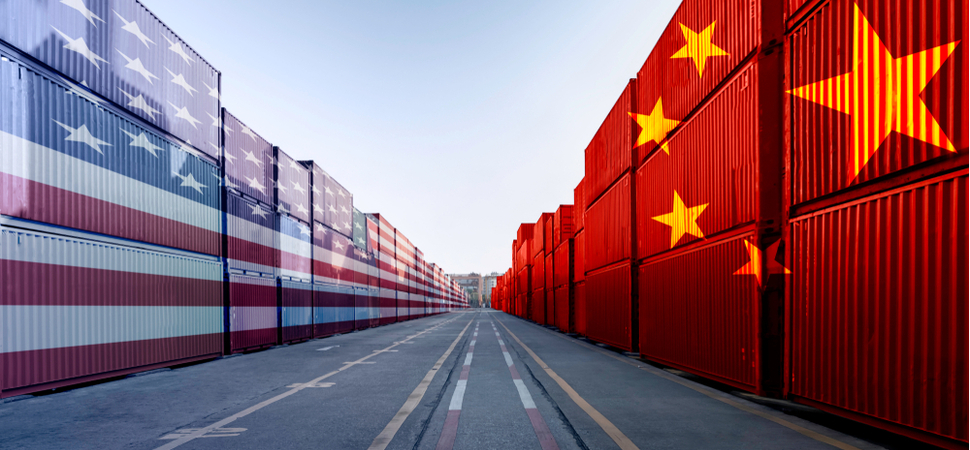Between the COVID-19 pandemic and the geopolitical tensions between two major trading hubs, US and China, it is expected that global trade will be volatile in the coming months and years.
With numerous other issues impacting trade internationally, it can be quite difficult to gauge the global trade growth outlook.DMCC, the world’s flagship Free Zone and Government of Dubai Authority on commodities trade and enterprise, has released a complimentary Future of Trade 2020 report detailing the factors impacting trade, and the trends we can expect to see in this decade.
The award-winning report will identify how global trade will be defined in the coming years in relation to the pandemic, politics, finance and infrastructure, technology, and sustainability. It will consolidate the research, data and perspectives of leaders across the globe collated over 12 months to provide an insight into what the future of international trade holds, especially in the eight key trading hubs – Dubai, London, Houston, Johannesburg, Shenzhen, Silicon Valley, Singapore and Zurich. Global trade operators will be able to use these insights to identify how they can best capitalise on the available opportunities.
Here’s a teaser on what you can expect to uncover in our upcoming Future of Trade 2020 report:
The Future of Global Trade Growth

Considering the current international business environment that the COVID-19 pandemic has impacted, it comes as no surprise that most countries will be focused on economic recovery. To help the global economy in a post-COVID-19 world, governments may turn to longer-term shifts in strategy with protectionism and avoid an over-reliance on international supply chains.
While the pandemic has not entirely altered the forecast, as global trade growth projections for 2020 were already on a downward trend, both COVID-19 and international trade tensions have amplified the downturn.
As geopolitics will be a factor for modest trade growth, Determining trade growth will likely evolve to broadly tracking output growth.
To get a holistic overview of the future of trade, click here.
Foreign Trade Policies

The first, and arguably the definitive aspect that impacts trade is the various policies that governments pass to either facilitate or limit trading activity. The increasing geopolitical strategic rivalry in trade between the US and China has led to a spillover effect encouraging other governments to accelerate their adoption of protectionist measures.
Between geopolitical tensions and COVID-19, anti-globalisation sentiments are becoming more widespread, causing companies to recalibrate their supply chains by bringing it closer to the consumer. Doing so will not only allow for improved risk resilience, but also cost-efficiency. Both companies and governments will be looking to achieve this with the policies they adopt.
To learn more about the policies both parties may adopt, click here.
Technology and Trade

It is near impossible to discuss global trade without addressing the role technology plays in it. Technology has the potential to transform trade operations not just by increasing efficiency and lowering costs, but also allowing access to new business and trading opportunities. With technology, manufacturers can move production closer to consumers while allowing them to reimagine supply chains.
While new technologies such as artificial intelligence, blockchain, and the Internet of Things can revolutionise trade, whether it will actualise will remain dependent on the government response. Policies, subsidies, and other aids will determine whether technology is used to facilitate or disrupt international trade.
To read more about how technology will define trade in the 2020s, click here.
Global Trade Finance and Infrastructure
.jpg?width=970&name=shutterstock_1388271308%20(1).jpg)
Even with favourable policies and technology, trade can only continue to grow with sufficient financing and infrastructure. Despite its importance, will we see trade finance gaps close or widen over the next 10 years?
This chapter breaks down the finance gaps and provides insights into how they can be bridged to encourage global trade growth, including securing funding from other industries and governments.
To read more about trade finance and infrastructure, click here.
Trade Sustainability

Across the globe, the focus on sustainability issues arising from international trade, including environmental, human rights, and labour issues, have only been increasing. However, with heightened pressure from various stakeholders and policies to encourage sustainable practices, it is likely we will see businesses set more sustainability goals, and develop and implement innovative sustainability initiatives in the long run.
While the wishlist of sustainable practices is long, its implementation is considered difficult to achieve in day-to-day operations, especially considering the global focus on economic recovery in the coming years.
Will the 2020s see businesses sacrificing sustainability for economic recovery? Or will companies accept a slower recovery without sacrificing it?
To read more about sustainability issues that impact global trade, click here.
Uncover the Future of Global Trade Growth
Despite the pandemic and geopolitical tensions, the future of trade still has potential for growth. However, its extent will depend on government reaction and policies surrounding technology, trade financing, infrastructure, and sustainability.
Our report gives an in-depth insight into the issues that arise with each of these trade factors, and how they can be mitigated. Capitalise on these findings to identify opportunities and new markets to venture into, or even modify your operations.
Explore what the Future of Trade holds in our complimentary 2020 report, and learn what trade experts have to say on trade growth and trends. Download your copy here.
![Future of Trade 2020: Factors Impacting Global Trade Growth [Report]](https://f.hubspotusercontent00.net/hub/2509857/hubfs/Future%20of%20Trade/Blogs/FOT-2020-Blog-1-Global-Trade-Growth-and-Trends-Report-Featured-Image-Updated.jpg?width=800)




